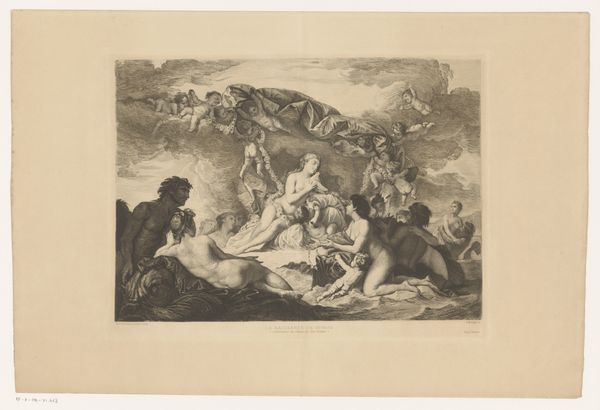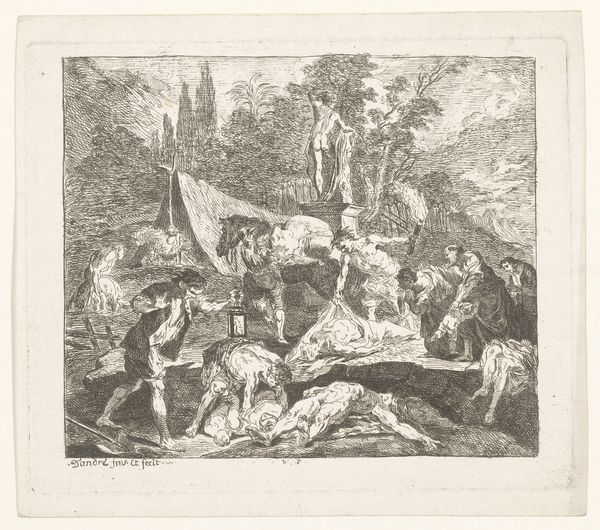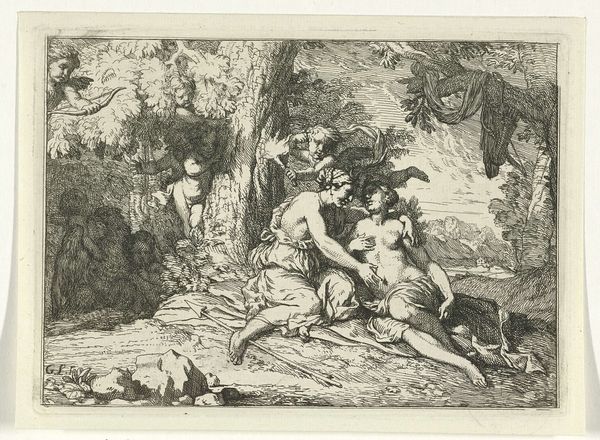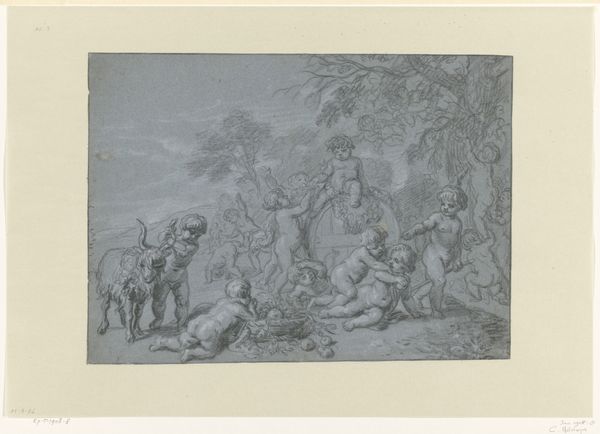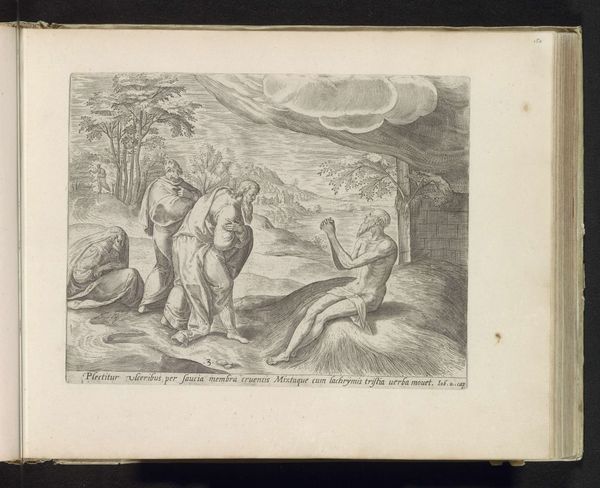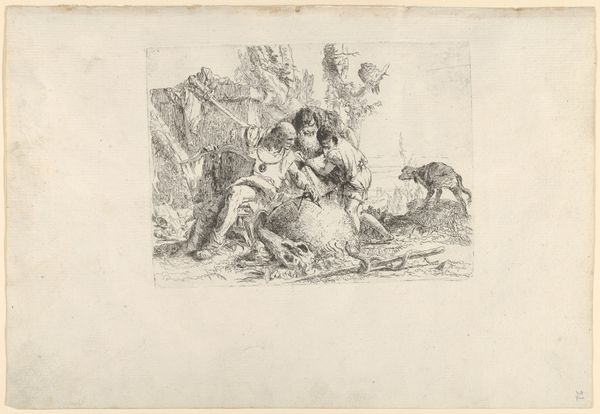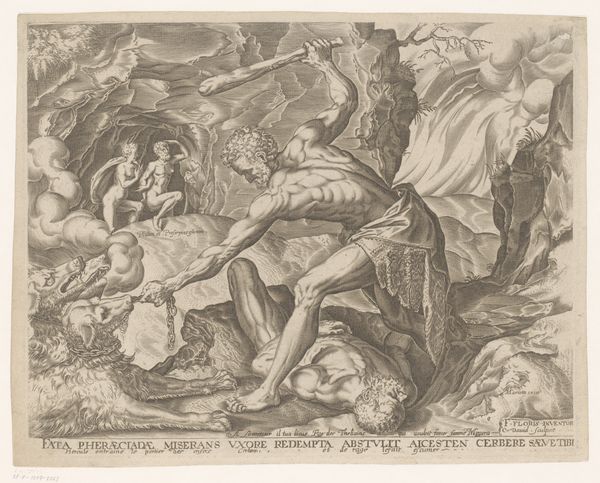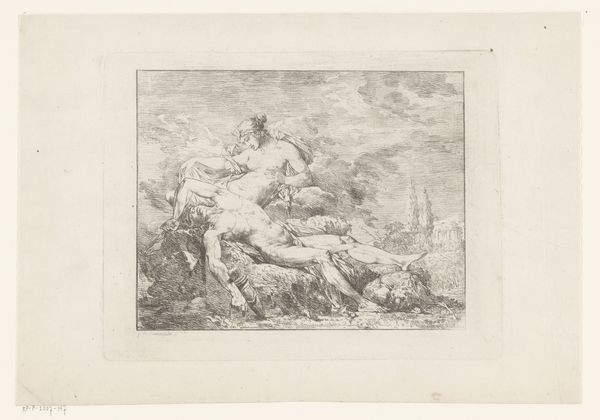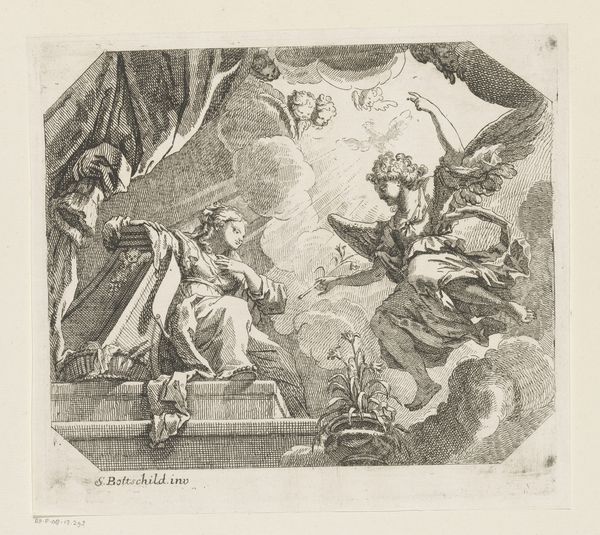
Dimensions: height 214 mm, width 264 mm
Copyright: Rijks Museum: Open Domain
George Andries Karsen made this print of The Infant Jupiter Nursed by the Goat Amalthea in 1862. It’s an etching, meaning that the artist would have used a sharp needle to draw through a waxy ground applied to a metal plate, which was then bathed in acid. The incised lines hold ink, which is then transferred to paper under high pressure. The effect here is quite beautiful, as Karsen coaxes a full range of tones from the simple contrast of black lines on a white ground. Consider how different this scene would be, if it were cast in bronze, or painted in oils. The etched line has a graphic directness, lending the mythological scene an immediacy, as if we are looking at a sketch made on the spot. In fact, this is a reproduction of a painting by the Baroque artist Peter Paul Rubens. Karsen was part of a tradition of printmakers who disseminated paintings to a wider public, offering access to great art, though also transforming the character of the work in the process.
Comments
No comments
Be the first to comment and join the conversation on the ultimate creative platform.

